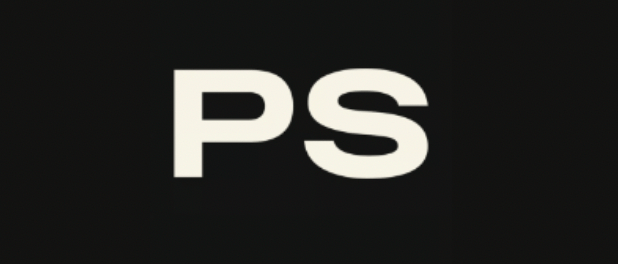
💰 From $50 to $176B
It’s 1964 and a guy named Phil Knight was on his way to Japan with only $50 to his name.
With no company, no sales experience, and no backup plan…
Knight managed to seal the deal of a lifetime with a Japanese shoe supplier.
5 months later Knight partnered with his old running coach Bill Bowerman, and founded ‘Blue Ribbon.’
Or more commonly known as ‘Nike.’
In the next 11 years, Nike would:
Sell its first 50,000 shoes with $0 spent on marketing
Become the biggest sports brand in the world
Build the largest customer database of any retail store at the time
Today, it’s a brand worth $174 billion.
Here’s what we got for ya:
📣 How To Build A $175B Fanbase
✅ The HVC Offer
👟 Filling The Gaps
Read Time: 5 min 6 sec

📣 How To Build A $175B Fanbase
Knight and Bowerman started out trying to sell their shoes through retail stores.
But after a few months, they realized Nike could not compete with big names.
Knight knew that to beat their competition, they needed to go where the competition was not - the race track.
“My sales strategy was simple and I thought rather brilliant. I drove all over the Pacific Northwest, to various track meets. Between races, I’d chat up the coaches, the runners, the fans and show them my wares. The response was always the same. I couldn’t write orders fast enough." - Knight

The Blue Ribbon (Nike) van
For every order, Knight wrote down important details about the runner like their shoe size, location, favorite races, birthdays, goals, etc.
Then, they’d send them birthday cards, good luck wishes before big games, and even just to say hey.
This is how Nike sold their first 50,000 shoes with no office and no marketing budget.
Runners may not talk about a pair of shoes they picked up at the store. But, they’d tell everyone about the nice guy selling shoes who sends a birthday card.
PS - Stripe took a similar approach. They did not market to finance chiefs. Instead, they pitched their product to developers and gave them the connections and resources they needed to grow.

Have a business or something you want to promote in front of 65,000+ readers?

Click the button below to apply now!

✅ The HVC Offer
In any market, all buyers can be grouped into what’s called the buyer’s pyramid:

Most companies market to the top 3% who are ready to buy today.
The problem was Nike had no chance at making money if they were also competing for that 3% of buyers.
So Nike took a different approach.
Nike went for the other 97% that were not actively looking for running shoes. And they did it with an HVC offer - A high-value content offer.
This is offering free information/ resources to buyers so they give you their attention and the chance to convince them to buy.
Nike did this in 3 ways:
#1 - The Jogging book
In 1967, Bowerman released his book “Jogging.”
It talked about the benefits of jogging, where to meet other joggers, etc… then mentioned the Nike shoe and how it is a must-have for effective running.
In less than 3 years, Bowerman sold over 1M copies.

By 1969, Nike made over 300K in shoe sales (that’s $2.5M today).
And by 1970, over 70% of US households owned a pair of Nike shoes.
#2 - The Runner’s Library
In 1966, Nike opened its first retail store in California. But it wasn’t a shoe store…

It was a ‘runner’s library’ with books about running. Runners could also come to the store for advice from Bowerman himself and meet with other runners.
So even if a runner did not need shoes when they entered the store, they still became customers later when they did need shoes.
#3 - Training future Olympians and pro athletes
In the 1970s Nike started to sponsor new athletes that showed potential.
At first, Bowerman trained runners himself for the Olympics. He would train them, then have them wear Nikes when they competed.
Today, Nike sponsors athletes like Michael Jordan, Lebron James, Kevin Durant, and Tiger Woods.

Their process is simple:
Sponsor an underdog athlete with potential -> Athlete makes it to major teams -> Have your brand shown to the whole world -> Buyers want your shoes

👟 Filling The Gaps
If you've been here for a while, I’m sure you’ve heard me say this quote:
“A great marketer does not need a great product. But a bad product needs a great marketer.”
And for the first time, I’ve found a brand with both great marketing AND a great product.
Before Nike, there were no US shoes that runners loved. When Bowerman was a coach he would need to add cushions and rubbers to make them better.
So when Knight had the idea to import running shoes from Japan which was known for their high-quality shoes…
Nike became the best running shoe overnight. Even if no one knew it yet.
In my opinion, Nike’s commitment to having the best shoe is the reason they were able to keep the company alive.
Why?
Nike didn’t need to be good at sales. They just had to prove how good the product was.
So even though both founders had no experience in sales, and neither did the ex-runners they hired to sell the shoes… they sold out every month.
I have two takeaways from this:
#1 - You don’t decide what to sell. You sell what your market is craving for.
#2 - You either spend your time building a product that sells itself, or you spend the rest of your life trying to sell it.

